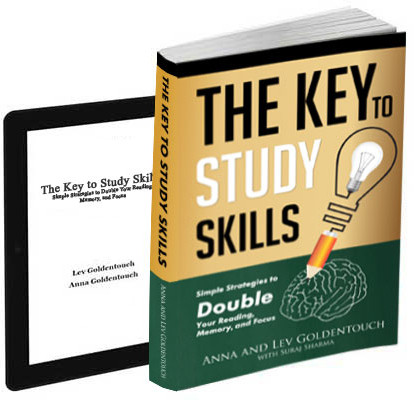Too Many Ideas? How to Focus, Prioritize, and Take Action Without Overwhelm
In the age of limitless opportunity and constant information, having too many ideas is a real and often paralyzing challenge. Whether you’re an entrepreneur, a student, or a lifelong learner, chances are your brain is generating more ideas than you have time or energy to pursue.
While creativity is a gift, unfocused creativity can lead to stagnation. The real skill lies in how you filter, organize, and act on those ideas. Treating your personal and professional growth as a strategic project—with evaluation, prioritization, and execution—can dramatically increase your clarity, productivity, and long-term success.
This article will guide you through a structured, practical process to manage idea overload and focus your energy where it truly matters.
Step 1: Capture Every Idea — Then Let It Breathe
Start by building a personal “idea vault.” Don’t rely on memory alone; it’s inefficient and anxiety-inducing. Use tools like Google Sheets, Notion, or Trello to log every idea as it comes—projects, skills to learn, business concepts, even personal goals.
Having a reliable system for capturing ideas reduces stress and creates mental space for focused work. Later, when opportunities arise (like a job offer, unexpected free time, or new tools), you can react fast and smart because your idea bank is organized and ready.
This approach also supports proactive thinking. As discussed in this article on managing timing biases and communication strategies, knowing when to act on an idea is just as important as what the idea is.
Step 2: Focus on One Thing at a Time
Multitasking is largely a myth. Only a small fraction of the population (around 2%) can juggle multiple complex tasks effectively. For most of us, deep work and single-tasking drive far better outcomes.
Prioritize your ideas by choosing one that stands out based on timing, feasibility, and personal resonance. Commit fully to that one idea. Once it’s complete, or clearly no longer valuable, move to the next.
Choosing just one idea at a time forces you to evaluate all options consciously, rather than impulsively jumping from task to task. This builds discipline and clarity—essential ingredients for consistent growth.
If you’re struggling with attention or cognitive overload, you may find this piece on why it’s hard to focus to be a helpful companion.
Step 3: Evaluate Return on Investment (ROI)
When choosing which idea to pursue, think like an investor. Every idea demands time, energy, and resources—so what’s the return?
Use this simple framework:
- How much effort will this take?
- What will I gain—money, skills, connections, personal satisfaction?
- Is it scalable or repeatable?
- Does it align with my long-term goals?
For example, imagine you’re considering running 20 minutes a day for health. If it adds 5 years to your life, the ROI might seem high, but only if you actually enjoy it or can sustain it. Maybe swimming or dancing would give you the same benefits with more joy.
This type of practical thinking reflects the mindset of learners who actively measure time vs. impact, as explored in this deep-dive on productivity and time management.
Step 4: Track Long-Term Trends
Many of the best ideas are those that align with future shifts in culture, technology, or lifestyle. Smart learners and entrepreneurs read widely, follow experts, and keep a pulse on where the world is heading.
Read blogs, talk to mentors, and study industries adjacent to your own. Look at what older professionals are focusing on—these are likely trends you’ll face soon. Positioning yourself ahead of change increases your leverage and resilience.
To build this forward-thinking habit, check out this article on physical activity and cognitive improvement. It’s a good example of aligning daily action with long-term brain optimization.
Step 5: Identify What Makes You Happy, Healthy, and Fulfilled
We often chase ideas that sound impressive but don’t match our values. Instead of optimizing for “more” or “faster,” consider how each idea supports:
- Your happiness (personal meaning, joy)
- Your health (mental, emotional, physical)
- Your wealth (financial security, career growth)
This triad—happy, healthy, rich—is simple but powerful. You can expand it into more personal dimensions (like family, community, spiritual growth), but always circle back to what matters most to you now, one year from now, and ten years from now.
Step 6: Assess Your Ability to Execute
Sometimes we pick great ideas but fail to execute, not because we’re lazy, but because we lack the necessary resources. These include:
- Time
- Energy and focus
- Money or tools
- Skills and knowledge
- Social support
- Internal motivation
If you’re procrastinating or feeling overwhelmed, it’s not always a mindset issue—it may be a resource gap. Try breaking the big idea down into levels, where each smaller milestone builds the next.
This is exactly how the KeyToVision Productivity Masterclass is structured: each module builds on the last, ensuring you don’t move forward without the right foundations.
Step 7: Build Execution Into Your Lifestyle
Once you’ve selected your focus idea, create a daily or weekly plan to execute. Start with micro-actions:
- Schedule 30 minutes daily to work on it
- Break down your goal into 3–5 milestone steps
- Celebrate small wins to maintain momentum
And if you do start procrastinating, don’t beat yourself up. Instead, ask:
- Am I still excited about this?
- What’s blocking me—fear, skill gaps, confusion?
- Is this the right time, or do I need to shift focus?
As this article on focus loss explains, falling off track is common. The secret is to recognize when it happens and course-correct gently.
Bonus Strategy: Reframe Procrastination as Feedback
If you’re stuck on one idea, try shifting to a “feeder” activity that helps build your capacity. For instance:
- Can’t write that article? Read three pieces on the topic.
- Can’t start the coding project? Watch a tutorial on the tech stack.
- Can’t launch the business? Interview a founder you admire.
Reframing procrastination as a signal, rather than a flaw, lets you use it as part of your growth loop instead of letting it derail your progress.
Productivity Is Personal: Track, Adapt, Iterate
Everyone has a different rhythm and bandwidth. What works for one person may not suit your personality, schedule, or values. That’s why personal productivity is more about adaptation than imitation.
In the KeyToStudy article on communication and cognitive load, we see how even our conversations are shaped by time, attention, and bias. The same applies to ideas: what feels urgent or exciting may not actually be your best next step.
To make better decisions, track:
- What ideas consistently pull your interest?
- When are you most productive?
- What conditions trigger overwhelm or focus?
Over time, this data helps you identify patterns that you can harness—or avoid.
Join the Superlearner Community
If you’re committed to mastering your productivity, focus, and idea execution, connect with the KeyToStudy community via the KeyToStudy Facebook page. You’ll find support, strategies, and inspiration from learners like you.
You can also level up your system with the KeyToStudy Mastery Book, which offers a complete roadmap for memory, learning, and execution across life domains.
Conclusion
Yes, having too many ideas can become a barrier—but it doesn’t have to be. When managed properly, idea overload becomes idea abundance. The key is to slow down, reflect, prioritize, and focus. Your brain is not just a firehose of possibilities—it’s a powerful processor of purpose and potential.
Capture your ideas. Evaluate them with clarity. And when it’s time—commit fully and act.
Smart action beats scattered brilliance every time.

Get 4 Free Sample Chapters of the Key To Study Book
Get access to advanced training, and a selection of free apps to train your reading speed and visual memory

